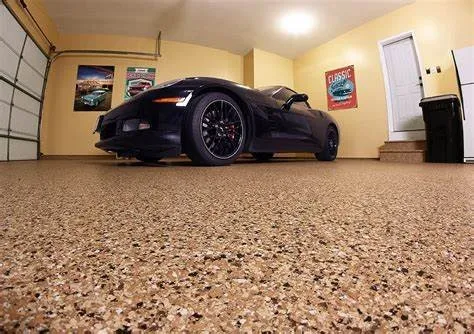
“Effective weatherproofing is no longer optional—it’s essential. Choosing right seals, materials, and door styles not only protects your garage from extreme elements but also enhances energy efficiency, prevents costly damage, and extends the life of your investment.”
Let’s be honest – garage is not just a place where you simply park your car. It serves as a workshop, storage area, and occasionally even an extension of living space. But do we focus enough to protect this space? Obviously not.
Many homeowners focus on roofing, windows, and exterior siding. But they often overlook one critical component, and that is garage. Your garage, whether attached or detached, needs proper weatherproofing. This will not only enhance comfort but also safeguard everything stored inside as well as reduce energy bills.
In this guide, we will explore seals, materials, and garage door styles that are designed to withstand extreme weather, right from heavy rains to harsh UV rays. Let’s dive into how you can turn your garage into a weather-resistant fortress.
Why Weatherproof Your Garage?
The first question that comes to our mind is: why should we need to weatherproof our garage? The answer is its multiple long-term benefits. It
- Prevents water damage as well as mold growth.
- Protects vehicles, tools, and equipment from rust and degradation.
- Keeps pests out during seasonal changes.
- Blocks out drafts to regulate internal temperatures.
- Reduces energy costs by improving insulation.
If we sum up, it won’t be wrong if we say that a weather-resistant garage ensures peace of mind year-round, especially if you live in a region with sweltering summers or icy winters.
High-Quality Garage Seals: Your First Line of Defence
weather-proofing-your-garage-seals-materials-and-door
<img style="display: block; margin-left: auto; margin-right: auto;" src="../images/research-%20methodology/weather-proofing-your-garage-seals-materials-and-door1.webp" alt="100%""" width="100%" />
Garage door seals, also known as weatherstripping, are undoubtedly your first line of defense against external elements. They are in fact the unsung heroes, without whom, even the most robust garage door falls short in protecting your space. They have the tendency to prevent water, air, dirt, and pests from entering the garage. Here are some popular types of seals used in garages:
- Bottom Seals
Bottom seals are strips of materials like vinyl or rubber attached to the bottom of a door to close the gap between door and the floor or threshold. They create a tight barrier between the garage door and the floor. These can crack and flatten over time.
Recommended Solution: Install a heavy-duty EPDM rubber bottom seal that is UV- and ozone-resistant. These seals remain flexible even in subzero temperatures and are effective at keeping out water and debris.
- Threshold Seals
These are water-resistant strips generally made of rubber or vinyl. They are directly installed on the garage floor where the garage door meets the ground. These seals act as barriers to prevent water as well as pests, debris, and drafts from entering the garage.
Pro tip: Use adhesive-backed or bolt-in-place threshold kits with high durability for long-term performance.
Side and Top Garage Seals
Side and top garage seals are weatherstripping materials installed on the side and top of a garage door frame. They are mostly used to create a tight seal, preventing drafts, dust, and pests from entering the garage. These seals help insulate the garage, thereby keeping it warmer in winter and cooler in summer.
Tip: Look for PVC or rubber-based weatherstripping for better elasticity and resistance to environmental wear.
Choosing the Right Garage Door Material
Let’s face it- Not all garage doors are built equally. They may look similar, but beneath the surface, they are not created equal. If your current door is made of thin wood or cheap aluminum, it is probably letting in more than you realize. Investing in the right material can make a huge difference in both insulation and durability.
- Steel Garage Doors
Steel is undoubtedly one of the most popular choices for making garage doors. This is due to its high strength, weather resistance, insulation capabilities, and relatively low maintenance. For weatherproofing, look for double-layer or triple-layer steel doors with an insulating core (like polyurethane). The thicker the steel gauge and the more insulation, the better its thermal performance.
Steel garage doors can rust over time if not treated properly. This is why, choosing galvanized steel doors with a powder-coated finish and built-in polyurethane foam insulation is best for optimal results.
- Fiberglass Garage Doors
Fiberglass garage doors have the potential to resist saltwater corrosion. They can perform well in coastal or humid environments. However, they can become brittle in conditions like extreme cold. As a result, fiberglass is combined with steel for added strength. Many homeowners prefer fiberglass overlays on a steel frame as this combination can offer good insulation and resistance to dents as well as corrosion.
- Wood Composite Doors
If you want the aesthetic appeal of wood without the weather-related drawbacks, wood composite is a great option. Wood composite garage doors are resistant to warping and rotting. What limits their adoption is their high cost. Choose wood composite garage doors treated with water-resistant sealants for optimal performance.
Weather-resistant Materials for Walls and Floors
Weatherproofing doesn’t stop at the door. Your garage walls as well as flooring also need protection from moisture and heat loss. For this purpose, you should use coatings and insulation materials.
- Floor Coatings
Concrete floors can absorb moisture and become slippery or cracked. This is where floor coatings step in. Applying waterproof epoxy coating or polyuria floor system creates a barrier that is resistant to chemicals as well as water and heat. These coatings can effectively extend lifespan of the floor as well as make cleaning easier and reduce dust.

- Insulating Walls and Ceilings
If your garage is attached to your living space or used as a workshop, adding rigid foam board or spray foam insulation to the walls and ceilings is essential. This helps prevent thermal leakage and improves comfort and usability throughout the year. Some common insulation materials that you can use include fiberglass batts, spray foam, or rigid foam boards.
Door Styles That Withstand the Weather
You are mistaken if you think that the style of your garage door is just about aesthetics — it can impact weather resistance as well. Following are some of the popular garage door styles that play a key role in weather resistance.
- Sectional Doors
Sectional doors are, without any doubt, the most popular type of garage doors and offer excellent waterproofing. They consist of multiple horizontal panels joined together by hinges. These panels move vertically along tracks and curve horizontally along the garage ceiling to open and close.
Modern sectional doors seal tightly against the edge. They are designed to handle high wind loads and pressure differences, making them ideal for storm-prone areas.
- Roll-Up Doors
Roll-up garage doors open and close simply by rolling up into a coil above the door opening. They are made of interlocking horizontal slats, usually steel or aluminum, that coil around a drum when opened.
Roll-up doors are known for their security as well as durability and space-saving design. They offer great weather sealing thanks to minimal seams and durable construction. These doors are mostly used in commercial or industrial settings.
- Side-Hinged Doors
Side hinged garage doors or side opening garage doors open outwards, like a traditional door, using hinges on the vertical side. They swing open horizontally, providing a different way to access the garage.
However, these garage doors can be more susceptible to wind-driven rain and snow at the bottom and side. As a result, they need robust weatherproofing at the joint and base. You can choose side opening garage doors with modern seals and double-skinned insulation panels.
<img style="display: block; margin-left: auto; margin-right: auto;" src="../images/research-%20methodology/weather-proofing-your-garage-seals-materials-and-door3.webp" alt="100%""" width="100%" />
Conclusion:
Weatherproofing your garage is not just about surviving the elements. Rather, it is about enhancing your home’s efficiency, safety, and comfort. Your garage can become a well-protected space that functions optimally by using the right combination of quality seals, durable materials, and smart door styles. No matter what Mother Nature throws your way, these combinations will help you to withstand every element.
Disclaimer: This post was provided by a guest contributor. Coherent Market Insights does not endorse any products or services mentioned unless explicitly stated.





